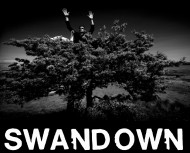Events
-
The Artangel Longplayer Conversations
2005-PresentEach year, as a way of celebrating the vision behind Longplayer’s long term aspirations, Artangel invites a leading cultural thinker to conduct a public conversation with someone they have never met, and to engage in a discussion inspired by the philosophical premise of a project which unfolds, in real time, over the course of a millennium.
-
Longplaying 4: David Rooney: Navigating experimental invention, survival and destruction: the Royal Observatory and GMT
Trinity Buoy Wharf, 28 September 2011Curator and historian David Rooney talked about the long-term experiment of Greenwich Mean Time.
-
Longplaying 3: Andrew Kötting & Iain Sinclair: Swandown
Trinity Buoy Wharf, 7 September 2011In the third of this summer’s Longplaying events artist and film maker Andrew Kötting and writer Iain Sinclair talked about their new collaborative work Swandown and the Long Pedal.
-
Longplaying 2: Paul Shepheard
Trinity Buoy Wharf, 28 July 2011For this one-off event, writer and architect Paul Shepheard devised a lecture on ‘The Bowl of the Horizon’, based on initial discussions he had as part of the original Longplayer steering group.
-
Longplaying 1: Richard Wilson
Trinity Buoy Wharf, 29 June 2011The Longplaying season kicked off on the 29th of June with a memorable talk entitled ‘The Butterfly Effect’ from renowned artist Richard Wilson. Wilson showed five films and talked about his use of film in sculptural works.
-
Longplayer Live in San Francisco
Yerba Buena Center for the Arts, San Francisco, 16 October 2010The third Longplayer Live performance, together with a Long Conversation (at the C.M.J.), took place in San Francisco on October the 16th, 2010, presented by the Long Now Foundation. Participants are listed here. The conversations can be watched and listened to here.
-
Shortplayer
Wood Street Galleries, Pittsburgh, 1 October - 31 December 2010For three months, Wood Street Galleries in Pittsburgh hosted a Longplayer listening post. The opening night, 1 October 2010, saw the world premiere of Shortplayer #1, the first of a new series of compositions by Jem Finer. Shortplayer #1 is an hour-long composition for 7 brass and reed players based on the compositional pricipals of Longplayer.
-
Longplayer turns ten
The Lighthouse, London, 31 December 2009The second Longplayer Live performance took place at Longplayer’s 10th annual New Year’s Eve event at the Lighthouse, Trinity Buoy Wharf, London. Marking the first complete decade of Longplayer’s 1000-year duration, the performance lasted 3 hours from 12 midday to 3 p.m. GMT (i.e. 00:00 – 03:00 IDLE, the first three hours of the new year at…
-
Longplayer Live
The Roundhouse, London, 12 - 13 September 2009Jem Finer’s Longplayer is famously the longest non-repeating piece of music ever composed. It has been playing continuously since the first moments of the millennium, performed by computers around the world.
On September 12th, 2009, Longplayer took a giant step forward with its first-ever live performance, at the Roundhouse, London. This historic 17-hour event spanned 1000 minutes of Longplayer’s 1000-year duration, from 08:00 on the morning of the 12th until 00:40 on the morning of the 13th.
-
A Slow Walk for Longplayer
21 June 2005Early on the 21st June 2005, Ohad Fishof set out to walk very slowly across London Bridge. ‘Set against the varying speeds and rhythms of urban life – pedestrians, cars, trains, airplanes, water, clouds, birds, boats and buildings – a Slow Walk is a simple way of giving form to the passing of time. Slowing down a natural, instinctive action such as walking exposes its mechanical depths and inherent dramas. It magnifies slight changes. As in the slow motion shots of a blooming flower in wildlife documentaries, it allows ones attention to shift, enabling the rediscovery of the slow, invisible changes behind the fast visible ones.’









